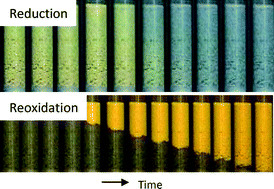Sustainable selective oxidations using ceria-based materials
Abstract
This Perspective covers sustainable

* Corresponding authors
a
Van’t Hoff Institute for Molecular Sciences, University of Amsterdam, Nieuwe Achtergracht 166, Amsterdam, WV, The Netherlands
E-mail:
G.Rothenberg@uva.nl
Web: http://www.science.uva.nl/~gadi
Fax: +31 20 525 5604
This Perspective covers sustainable

 Please wait while we load your content...
Something went wrong. Try again?
Please wait while we load your content...
Something went wrong. Try again?
J. Beckers and G. Rothenberg, Green Chem., 2010, 12, 939 DOI: 10.1039/C000191K
This is an Open Access article. The full version of this article can be posted on a website/blog, posted on an intranet, photocopied, emailed, distributed in a course pack or distributed in Continuing Medical Education (CME) materials provided that it is not used for commercial purposes.
To request permission to reproduce material from this article in a commercial publication, please go to the Copyright Clearance Center request page.
If you are an author contributing to an RSC publication, you do not need to request permission provided correct acknowledgement is given.
If you are the author of this article, you do not need to request permission to reproduce figures and diagrams provided correct acknowledgement is given. If you want to reproduce the whole article in a third-party commercial publication (excluding your thesis/dissertation for which permission is not required) please go to the Copyright Clearance Center request page.
Read more about how to correctly acknowledge RSC content.
 Fetching data from CrossRef.
Fetching data from CrossRef.
This may take some time to load.
Loading related content
